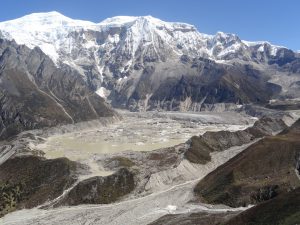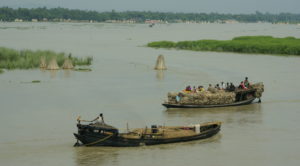It is astonishing for many people that India and China are so ill-informed about each other. The two most populous countries of the world share a very long border and conduct a great deal of bilateral trade – China is India’s second largest trading partner. Still, here is an example of the widespread ignorance – a friend of mine working with Ford Motor Company was assigned to work in China. On the taxi ride to his hotel, the driver asked him where he was from and my friend confidently said, “India,” expecting immediate recognition. To his mortification the taxi driver did not seem to know the name of the country, and he struggled to explain.
While conversations with taxi drivers is a trope for journalism done badly, a more detailed examination of how the Indian press covers China came to a similar conclusion. It is possible that more Indians know (and care) about China than vice versa, but that knowledge is restricted to the idea of a strategic threat, fostered by nationalistic fervour in the press. This ‘knowledge’, then, is less about China and the Chinese, but that of a threat to India.
Therefore, Tansen Sen’s “India, China, and the World: A Connected History” comes as a relief, as it lays out a much broader history of the two great regions which are now (largely) represented by the Republic of India (ROI) and the People’s Republic of China (PRC). Sen uses these last two designations of the post-colonial states as a way to distinguish between a history where these regions were governed by multiple entities that held sway over varying geographies. The book is a careful examination of histories of interactions from the first millennia BCE to the current time. It includes the Buddhist period, the expansion of Muslim trader routes, colonial interactions, the anti-colonial movements, and the modern states that have taken the mantle of the two great civilisations.

What emerges is a truly complex story of the drivers of interaction – religion, trade, national prestige, and culture – that were both state-led and involved the personal impetus of private players. Much of this happened in different geographies – for example traders and intermediaries from the ancient Central Asian state of Sogdia (overlapping parts of present-day Tajikistan and Uzbekistan) seem to have played a crucial role during Buddhist times, as did Southeast Asian states much later when sea routes became prominent, including the principality of Srivijaya (in present day Malaysia). In fact, the Srivijayan state, in order to gain leverage and prestige with the Chinese court, portrayed themselves as the masters of the Chola empire based out of South India, leading to a punitive expedition by the Chola dynasty in 1025.
Sen’s book, heavily footnoted, and nearly 500 pages in length, is not easy to summarise, but what emerges is how deeply the civilisations of India and China affected each other at the most intimate levels. For example, Sen cites how the Chinese state used silk as a form of trade (and payment for its military based in its far western garrisons), and how they came to trade in cotton from India because cotton robes were needed for Buddhist monks, with Buddhism itself an import from India. Thus India gained access to silk and China to cotton. Then there is the incorporation of medical knowledge in China from the treatises of Jivaka and Nagarjuna, so much so that Jivaka, in Chinese works, was used as a name to legitimise medical practices. In turn, the import of papermaking and gunpowder into India from China led to radical changes.
Maybe the most illuminating of issues is how wide-ranging the persons involved in India-China interactions were. We are familiar with the names of Marco Polo and the Moroccan Ibn Batutah – who was sent as an emissary from the Indian court to the Chinese – but then there is also a man named Abu Ali, whose funerary inscription makes interesting reading. “His family was originally from Helahedi (Qalhat, Amman?). Abu Ali’s father migrated to the Coromandel coast [in India] and became a member of the ruling elite. After Abu Ali defected to Yuan China, the Yuan court rewarded him with a Korean wife named Cai. This woman happened to be the daughter of the Korean official named Ch’ae In’gyu, with whom Abu Ali established contacts by sending gifts through a tribute carrier in 1298.” This is among the examples Sen presents to make a strong case of how India-China interactions were the central part of a wider Afro-Asian trade network.
These interactions continued throughout the colonial period. Sen points to a great deal of research that the initial European colonial powers built on maritime control points initially established by the famous 15th century Chinese naval expeditions led by Zheng He. There is a fascinating discussion on the tribute system, and how various courts saw it – some explicitly acknowledging the huge economic factor of traders using it, while others, such as Kublai Khan, using it to establish their pre-eminence against rivals.

All of this broke down as both India and China moved towards independence, first with quarrels over the status of Tibet, and then with the short 1962 war, after which relations froze. These have thawed since the 1980s as state-led processes have opened avenues for interactions, with the Belt and Road Initiative being the latest in a long line of state initiatives, though the Indian government views it with deep suspicion.
What Sen’s book suggests is that the interaction between the regions has been at its most fruitful when these interactions have not been state-led, when freer associations, often mediated by traders and free actors from – and within – various neighbouring regions have had full play. With the civilizational narrative ‘owned’ by the states, there is limited room for freer interactions, and thus narrow means to learn and enrich each other. For this alone, the book makes for fascinating reading.








